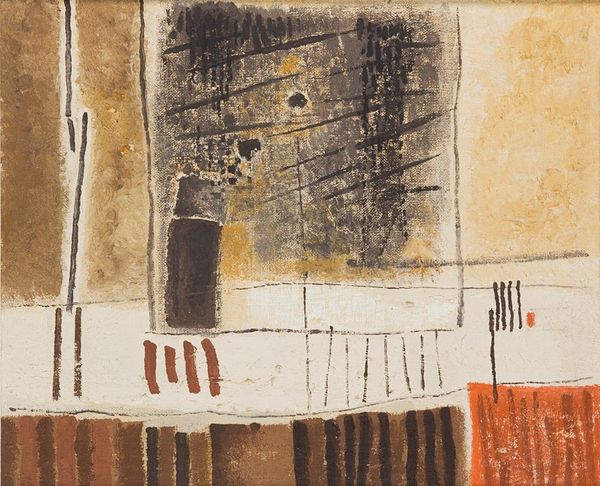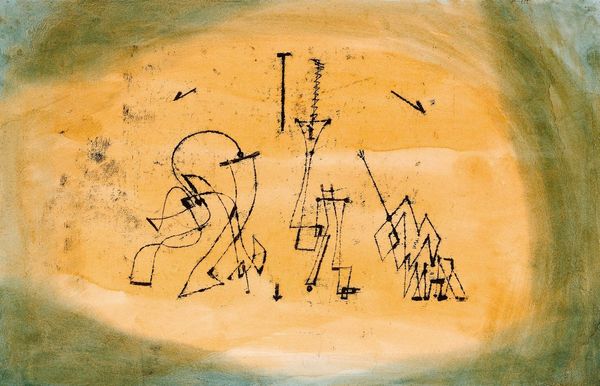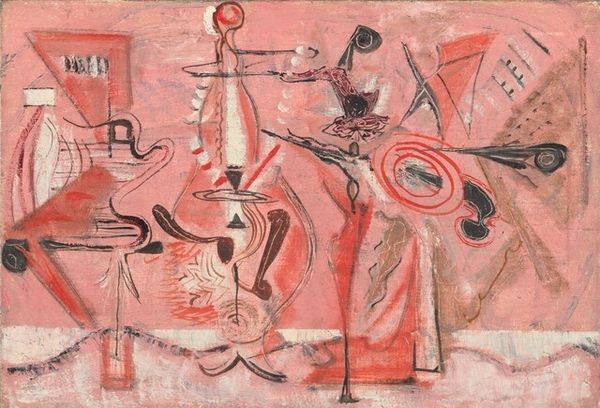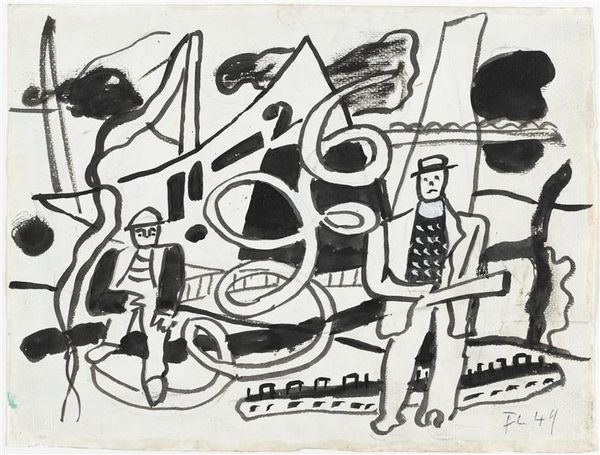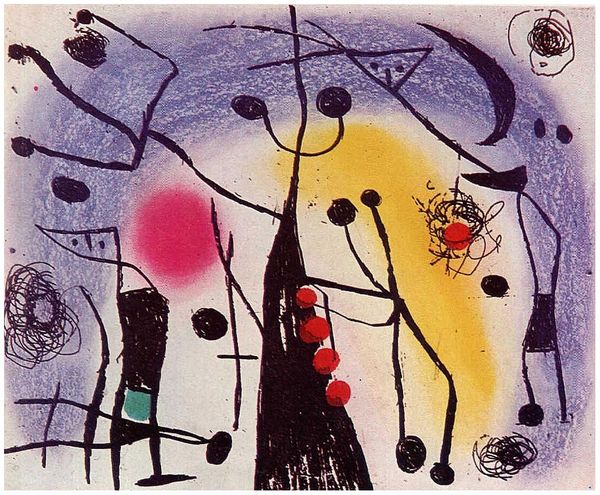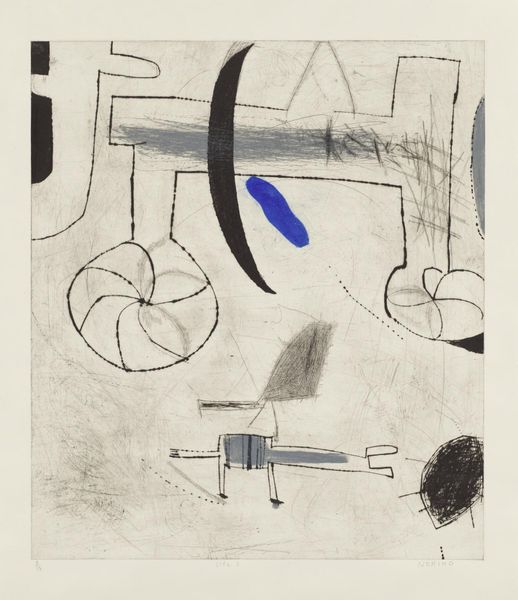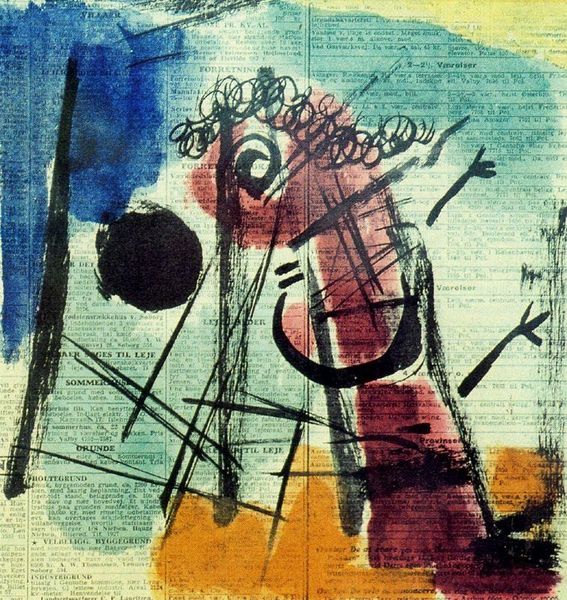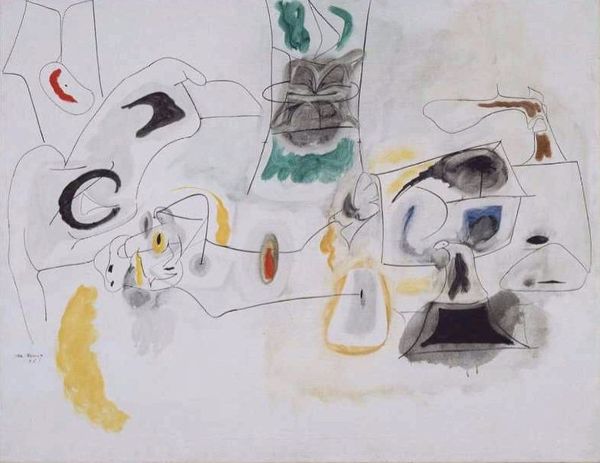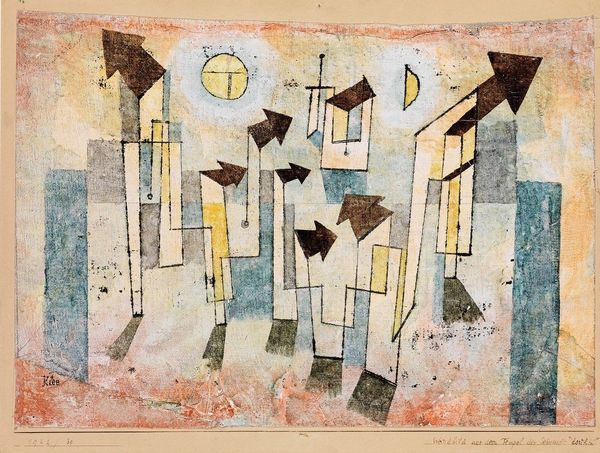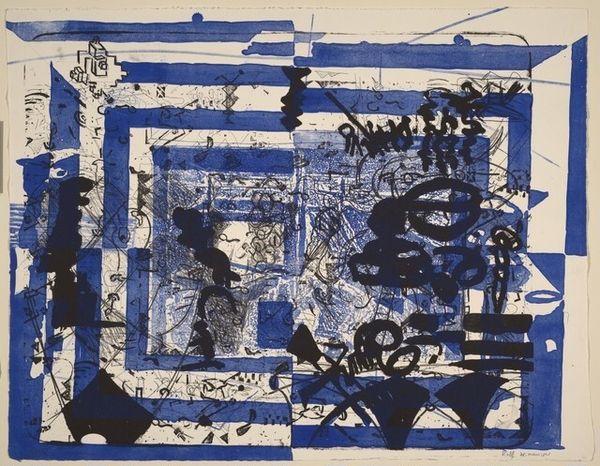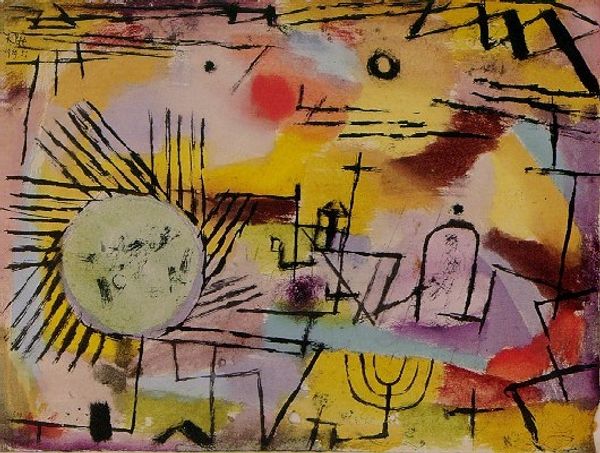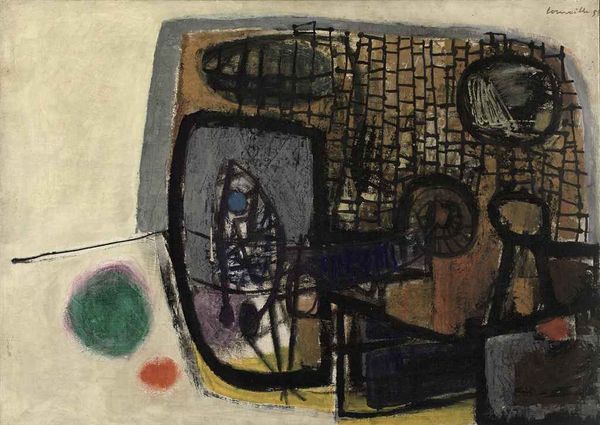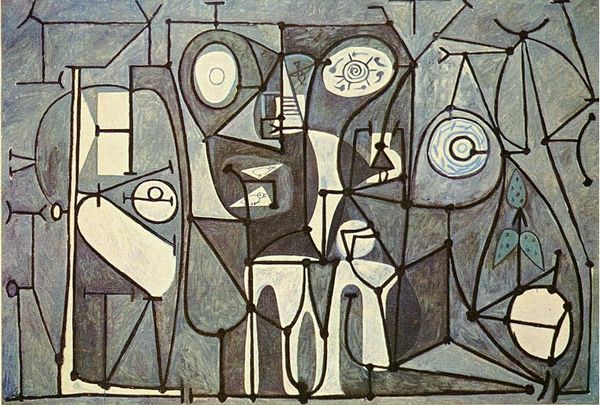
Dimensions: support: 156 x 254 mm
Copyright: © The estate of Julian Trevelyan | CC-BY-NC-ND 4.0 DEED, Photo: Tate
Curator: This etching, simply titled "Spain," was created by Julian Trevelyan in 1936, and it’s part of the Tate collection. Editor: My first thought? It feels like a dreamscape, doesn’t it? A half-remembered map filled with symbols and playful architectural ghosts. Curator: Given that it was produced on the eve of the Spanish Civil War, one could interpret it as a visual representation of a fragmented and destabilized nation. Consider the recurring motif of the crescent moon, an ancient symbol associated with transformation, perhaps alluding to societal change. Editor: Maybe. Or maybe it's just his subconscious doodling while reading the news! That stark contrast, the way the line digs into the paper, and the bold color accents—it’s almost violent in its simplicity. It vibrates with a weird energy. Curator: Indeed, the symbols themselves are quite loaded. The all-seeing eye, the stars, even the windmills could be stand-ins for the political and cultural anxieties of the time. Trevelyan seemed to be tapping into something very deep. Editor: I see it now. It's like he’s taken the weight of history and turned it into something unsettling, but strangely beautiful. Curator: It is a powerful reminder that even abstract images can be profoundly connected to specific moments in time. Editor: Right. And that sometimes, the best way to understand a place is to look at its dreams, or maybe its nightmares.

